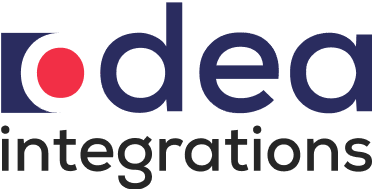In today’s fast-paced business environment, where customer expectations are higher than ever, efficient communication is critical for maintaining strong customer relationships. For businesses that rely on customer service and support, integrating a telephony system with a CRM solution can significantly improve communication and productivity. One of the most impactful ways to enhance CRM communication is by integrating Salesforce with a CTI (Computer Telephony Integration) solution.
The Salesforce CTI Connector enables businesses to seamlessly connect their phone systems with Salesforce, creating a unified communication platform that enhances customer interactions.
In this article, we will dive deep into the Salesforce CTI Connector. We’ll explore Salesforce phone integration, call center integration, and discuss how these technologies are revolutionizing CRM communication.
We’ll also highlight the specific benefits, use cases, features, and potential challenges businesses may face when implementing the solution.
What is Salesforce CTI Connector?
The Salesforce CTI (Computer Telephony Integration) Connector is a tool that integrates Salesforce CRM with telephone systems, streamlining communication by linking voice interactions with customer data. By integrating your telephony system with Salesforce, the CTI Connector enables agents to make and receive calls directly within the Salesforce interface. This ensures that every phone interaction is automatically logged, and customer records are instantly updated, providing a comprehensive view of all customer interactions.
Salesforce Phone Integration (CRM Telephony)
Salesforce phone integration, often referred to as CRM telephony, involves connecting your existing phone systems to the Salesforce CRM platform. With this integration, businesses can track and manage phone calls directly within Salesforce. Calls made or received are automatically logged as activities, ensuring that all customer interactions are documented without requiring manual entry. This not only saves time for customer support teams but also ensures that customer history is easily accessible for future interactions.
Salesforce Call Center Integration
For businesses relying on call centers, Salesforce call center integration is a powerful solution. This integration allows call centers to operate seamlessly within Salesforce, ensuring agents have real-time access to customer information. With Salesforce call center integration, agents can instantly view customer records, call logs, and interaction histories, allowing them to deliver faster, more personalized support. This integration significantly boosts call center productivity, enhances the customer experience, and minimizes the likelihood of errors or delays during customer interactions.
Why It Matters / Benefits
The Salesforce CTI Connector brings several advantages to businesses looking to optimize their CRM communications:
- Increased Efficiency: Integrating telephony systems with Salesforce reduces manual tasks like call logging and data entry. This enables agents to spend more time on customer interactions and less on administrative work, increasing overall productivity.
- Improved Customer Experience: When agents have instant access to relevant customer information, they can offer more personalized, context-rich service. Whether it’s resolving an issue or answering a query, the ability to have the right information at the right time makes a significant difference in customer satisfaction.
- Enhanced Reporting & Analytics: The Salesforce CTI Connector provides businesses with valuable insights into call performance, customer interactions, and agent productivity. By tracking key metrics like call volume, average handling time, and customer satisfaction, companies can refine their processes and optimize operations.
- Reduced Call Handling Time: One of the key features of the Salesforce CTI Connector is its ability to automatically pop-up customer information when a call is received. This “screen pop” ensures that agents can immediately see the customer’s details, including past interactions, allowing them to resolve issues more quickly and efficiently.
- Omnichannel Communication: Salesforce CTI Connector doesn’t just work with phone calls; it also supports other communication channels, such as chat, email, and social media. This allows businesses to manage all customer interactions from a single platform, ensuring consistency across different communication channels.
Use Cases or Industry Applications
The Salesforce CTI Connector can benefit a wide range of industries. Here are a few specific use cases:
- Customer Support Teams: Integration allows support agents to see customer records as soon as a call comes in, leading to faster issue resolution. By having all relevant information at their fingertips, agents can provide more personalized and effective support, enhancing the overall customer experience.
- Sales Teams: Sales professionals can use the Salesforce CTI Connector to streamline their sales process. When making outbound calls, agents can automatically log the call in Salesforce and immediately follow up on any leads. Having the full customer history available also allows them to tailor their pitch, improving the chances of closing the sale.
- Healthcare Providers: In healthcare, communication with patients is crucial. By integrating telephony with Salesforce, healthcare providers can track patient interactions, manage appointment schedules, and keep detailed records of each patient’s history. This ensures continuity of care and improves patient satisfaction.
- Financial Services: Financial institutions can use the Salesforce CTI Connector to keep track of customer calls and access critical financial data. With the ability to view account information and transaction history during a call, agents can respond more accurately and swiftly, improving client trust and satisfaction.
Key Components / Tools / Features
The Salesforce CTI Connector comes with several key features and tools that help enhance CRM communication:
- Salesforce Open CTI: Salesforce Open CTI is a browser-based solution that supports multiple telephony systems. It ensures flexibility and scalability by allowing businesses to integrate various types of phone systems into their Salesforce environment.
- Screen Pop Integration: This feature is one of the most powerful aspects of Salesforce CTI. When a call is received, Salesforce automatically pops up the relevant customer information on the agent’s screen. This allows agents to instantly view key details like previous purchases, service history, or support tickets, making it easier for them to provide quick and personalized service.
- Call Logging & Recording: Every phone call made or received through the Salesforce CTI Connector is automatically logged as an activity within Salesforce. In addition, calls can be recorded for training purposes or to ensure compliance. This makes it easier to track customer interactions and access historical data whenever necessary.
- Omnichannel Support: In addition to voice calls, the Salesforce CTI Connector supports other communication channels such as live chat, email, and social media messages. This allows businesses to manage all their customer interactions within a single platform, providing a consistent experience for both agents and customers.
Common Challenges or Misconceptions
While Salesforce CTI integration offers numerous benefits, businesses should be aware of certain challenges and misconceptions:
- Compatibility Issues: Not all telephony systems are compatible with Salesforce CTI. It’s important to carefully select the right telephony platform that integrates smoothly with Salesforce to avoid integration issues.
- Cost & Resources: Implementing Salesforce CTI can require significant investment in terms of both time and money. The integration process involves configuring Salesforce, training employees, and potentially upgrading telephony infrastructure. Businesses should plan accordingly to ensure they have the necessary resources.
- Training and Adoption: Switching to a new system requires proper training and buy-in from employees. Resistance to change, lack of adequate training, or unfamiliarity with the new system can hinder the adoption of Salesforce CTI. Providing thorough training and support during the transition can alleviate these challenges.
How Odea Helps
At Odea, we recognize the power of the Salesforce CTI Connector in transforming CRM communications. Our team specializes in integrating telephony systems with Salesforce to ensure businesses can fully leverage the benefits of CRM telephony.
In addition to Salesforce, we also provide HubSpot CTI Connector solutions for businesses using HubSpot CRM, enabling seamless communication and consistent customer experiences across platforms.
By partnering with us, businesses can enhance operational efficiency, improve customer service, and streamline communication workflows. Our expertise in CRM integrations ensures that your transition to a unified communication platform is seamless and effective.
Conclusion
The Salesforce CTI Connector is a game-changing tool for businesses looking to enhance their CRM communication. By integrating telephony systems with Salesforce, companies can improve efficiency, deliver personalized service, and optimize their customer support processes. The Salesforce CTI Connector offers businesses the opportunity to streamline operations, increase customer satisfaction, and drive productivity.
Ready to revolutionize your customer interactions? Get in touch today to book your personalized demo and see how the Salesforce CTI Connector—powered by Odea—can elevate your CRM strategy.





